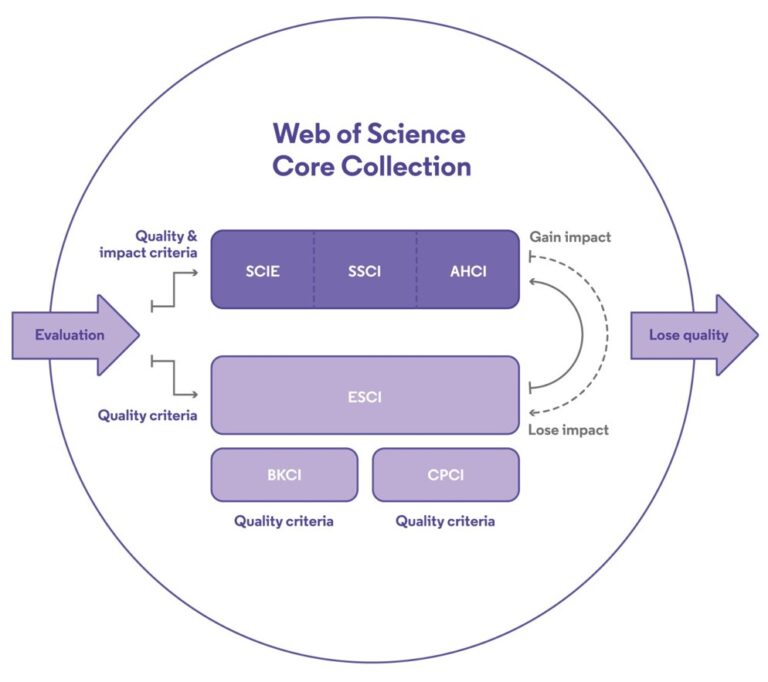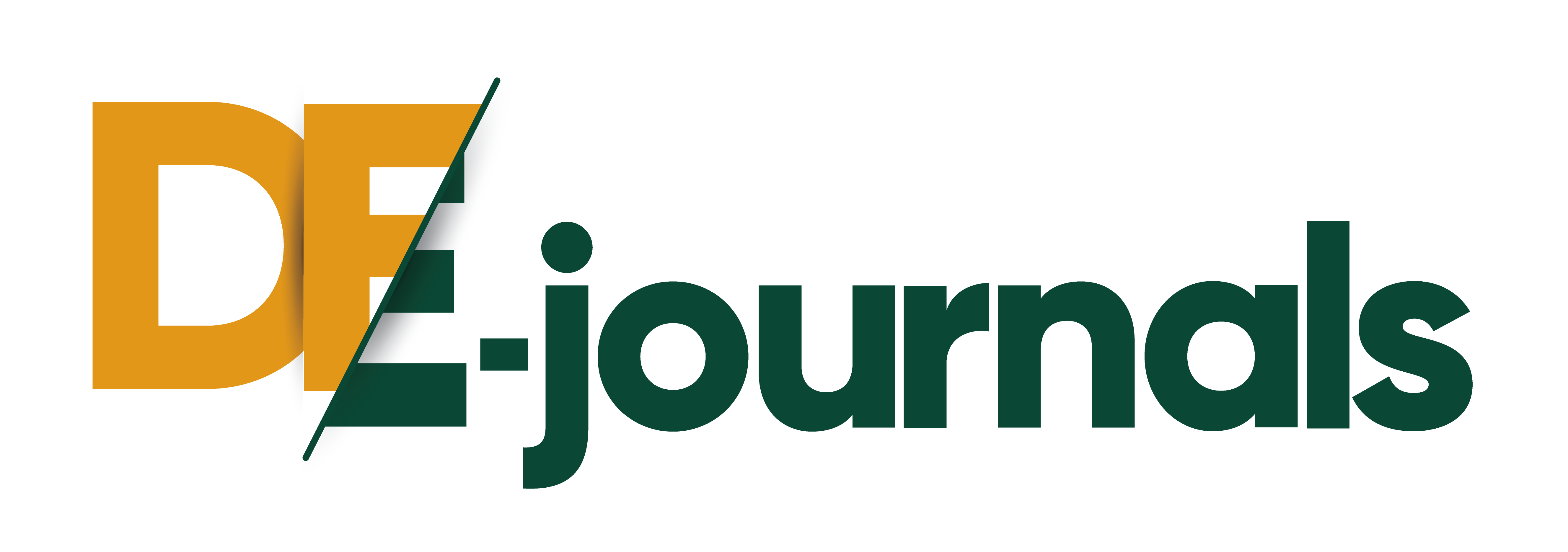Web of Science
Web of Science Journal Evaluation Process and Selection Criteria
The curation process for Web of Science Core Collection™ is unique: our editorial decisions are conducted by our expert in-house editors who have no affiliations to publishing houses or research institutes thus removing any potential bias or conflict of interest.
Each editor is focused on specific subject categories enabling them to gain a deep, nuanced knowledge of the journals in that field. This level of in-house editorial curation contrasts with methods used to create other commercially available databases that rely on predominantly algorithmic approaches and/or delegate aspects of editorial decision making to the research community.
The basic principles of our selection process remain the same: objectivity, selectivity and collection dynamics. We use a single set of 28 criteria to evaluate journals; these are divided into 24 quality criteria designed to select for editorial rigor and best practice at the journal level, and four impact criteria designed to select the most impactful journals in their respective fields using citation activity as the primary indicator of impact.
Journals that meet the quality criteria enter Emerging Sources Citation Index™ (ESCI). Journals that meet the additional impact criteria enter Science Citation Index Expanded™ (SCIE), Social Sciences Citation Index™ (SSCI) or Arts & Humanities Citation Index (AHCI) depending on their subject area. We use the term “flagship” to collectively refer to SCIE, SSCI and AHCI.
Collection Dynamics
These are dynamic collections subject to periodic re-evaluation to ensure journals are in the appropriate collection. ESCI journals that gain impact move to SCIE, SSCI or AHCI. Similarly, SCIE, SSCI and AHCI journals that decrease in impact move to ESCI. Any journal that fails to meet the 24 quality criteria will be removed from the Web of Science Core Collection. Journals in ESCI are re-evaluated for possible inclusion in SCIE, SSCI or AHCI when their citation activity indicates that the impact criteria may be met, regardless of the time since their last evaluation. In this process, journals are re-evaluated for quality first and impact evaluation is subject to quality being met. If both quality and impact criteria are met, the journal moves to a flagship collection.
In recent years our strategy has been to re-evaluate ESCI journals that have an estimated Journal Impact Factor™ (JIF) that places them in Q1 or Q2 in the JIF ranking of their relevant flagship category. These re-evaluations have been on hold as of 2022 as our current focus is on evaluating journals for quality rather than impact. We will prioritize new journals submitted for evaluation, in parallel with ensuring we remove any content from Web of Science that no longer meets our quality criteria. All new journals selected for coverage are currently added to ESCI and impact evaluations for new and existing journals remain on hold as of 2022.
If valid concerns are raised regarding an indexed journal, either by users or through monitoring by our in-house editors, the journal will be re-evaluated according to our selection criteria. Where valid concerns are raised about the quality of the content published by the journal, new content will not be indexed during the course of the re-evaluation. When the evaluation is complete, the publisher will be informed of the outcome and the journal will either:
- be removed from coverage if it no longer meets the quality criteria
- or remain covered if it continues to meet the quality criteria.
If the journal meets the quality criteria, any missing content will be indexed. If the journal is removed from coverage, content will not be backfilled. In the most serious cases of breaches in the journal’s editorial standards, as determined by our selection criteria, published content may be removed from Web of Science™. Timeframes for completing a re-evaluation will depend on the particular circumstances of each case.

Description of Evaluation Steps and Criteria

Initial Triage
The principal purpose of this triage step is to ensure unambiguous identification of the journal submitted for evaluation and to know who to contact if we have any queries or concerns. There is no embargo period for re-submission if a journal does not pass initial triage.
1. ISSN
2. Journal Title
3. Journal Publisher
4. Journal URL
5. Content Access
6. Presence of Peer Review Policy
7. Contact Details
Editorial Triage
In this step, the Web of Science editors review the journal to determine whether a full editorial evaluation is merited. There is no embargo period for re-submission if a journal does not pass editorial triage in its first evaluation. If a journal is subsequently re-submitted and fails editorial triage for a second consecutive time, re-submission is subject to an embargo period of one year.
8. Scholarly Content
9. Article Titles and Article Abstracts in English
10. Bibliographic Information in Roman Script
11. Clarity of Language
12. Timeliness and/or Publication Volume
13. Website Functionality/ Journal Format
14. Presence of Ethics Statements
15. Editorial Affiliation Details
16. Author Affiliation Details
Editorial Evaluation (quality)
In this step, the Web of Science editors are checking for alignment between the journal’s title, stated scope, the composition of its editorial board and authorship, and its published content. They are also looking for evidence of editorial rigour and adherence to community standards.
Responsibility and accountability for the quality of all published content, including any special issue content, lies with the publisher and the editorial board of the journal.
If a journal does not pass this step, re-submission is subject to an embargo period of at least two years.
17. Editorial Board Composition
18. Validity of Statements
19. Peer Review
20. Content Relevance
21. Grant Support Details
22. Adherence to Community Standards
23. Author Distribution
24. Appropriate Citations to the Literature
Editorial Evaluation (impact)
The criteria in this step are designed to select for the most influential journals in a given field of research, using citation activity as a primary indicator of impact. If a journal does not pass this step its performance will be monitored. The journal will be re-evaluated when citation activity indicates that the impact criteria may be met.
25. Comparative Citation Analysis
26. Author Citation Analysis
27. Editorial Board Citation Analysis
28. Content Significance
Relationship between Web of Science Core Collection and Journal Citation Reports
The Journal Citation Reports™ (JCR) is updated annually. Journals that are accepted into SCIE, SSCI, AHCI or ESCI before January 1st, and that remain covered in one of these collections when JCR production is started in March, are eligible to appear in the June release of the JCR data and receive a Web of Science Journal Citation Indicator (JCI). Previously, only SCIE and SSCI journals that met these requirements were also eligible to receive a Journal Impact Factor™ (JIF). From the June 2023 JCR release, all journals that meet these requirements are also eligible to receive a Journal Impact Factor™ (JIF). More information is available here.
How to submit
To submit journals for evaluation, use the Web of Science Publisher Portal.
Please note: Only journal publishers are granted access to the Publisher Portal and only journal publishers can submit evaluation requests. The Publisher Portal should only be used to submit evaluation requests for journals not currently indexed in the Web of Science Core Collection and should not be used to submit re-evaluation requests for journals indexed in ESCI. Impact re-evaluations for journals currently indexed in ESCI will be conducted based on internal monitoring and not in response to requests submitted by publishers.
Source: Web of Science Journal Evaluation Process and Selection Criteria - Clarivate
